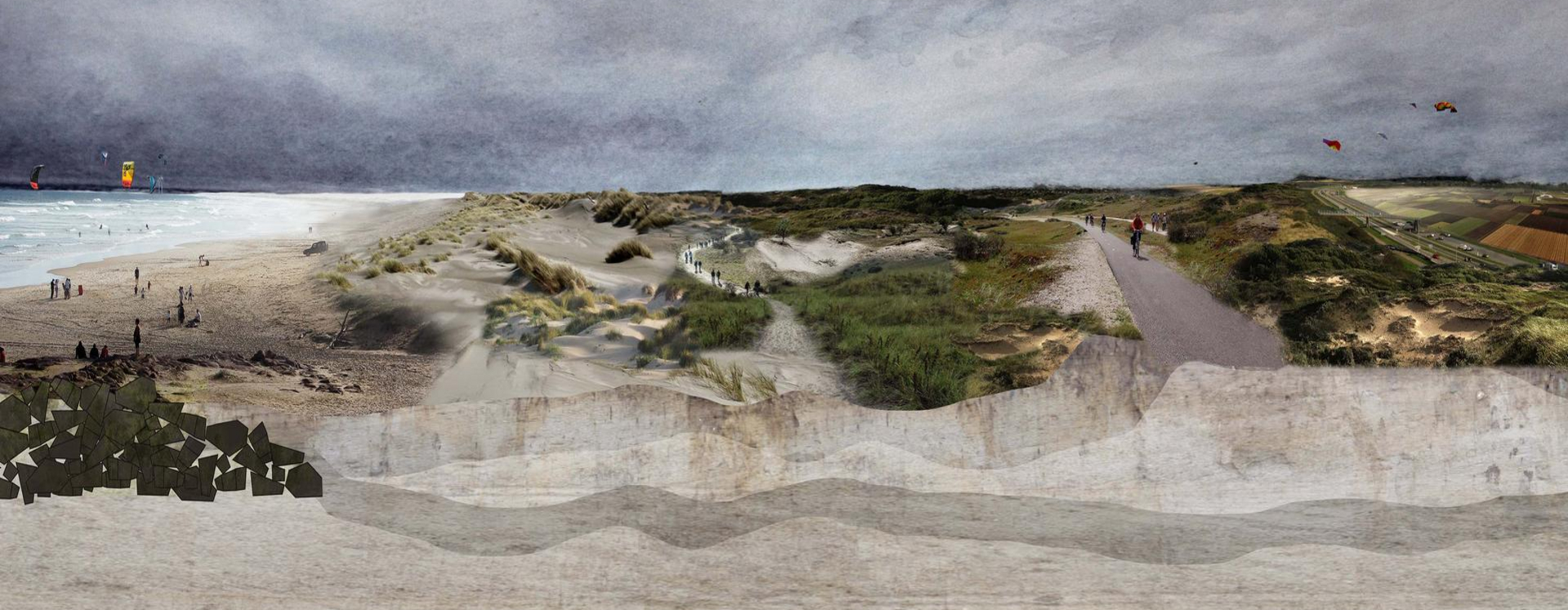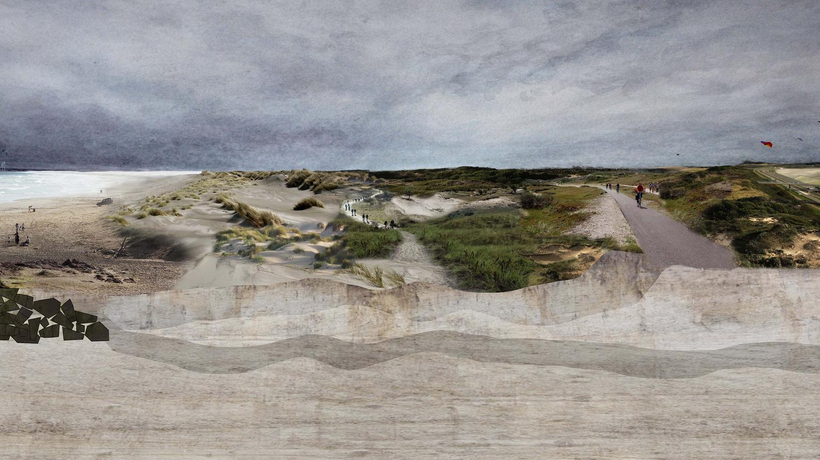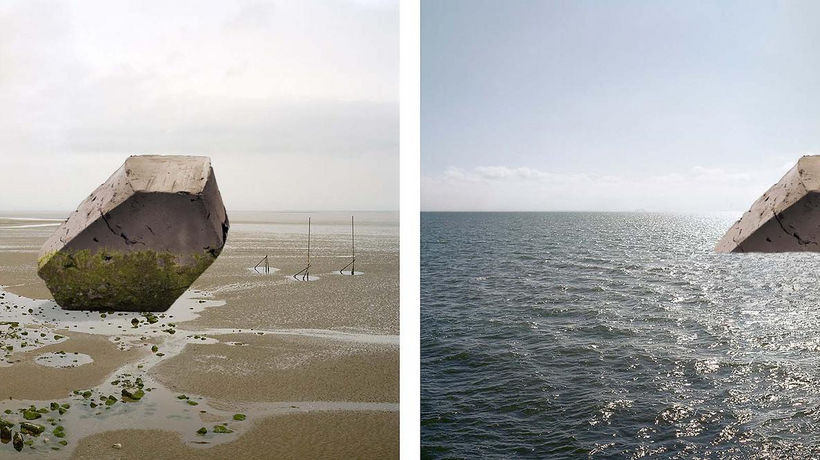Liquid Land
Liquid Land is a graduation project of Anne Nieuwenhuijs (Master in Landscape Architecture): ‘My graduation project is both an investigation and a design proposal in which I show that we can deal with dredging spoil in the Western Scheldt in a different way. By using the silt as building stone. By no longer considering it as waste. So that the Western Scheldt, a troubled estuary, can enrich nature, while maintaining its economic function.’
The smallest particle as a solution for the turbid Western Scheldt
The Western Scheldt (Westerschelde): an estuary, an open inlet that is simultaneously a river mouth, one of the busiest waterways in the world. The marine influence of the North Sea is becoming increasingly apparent and although the Western Scheldt is a nature conservation area, functionality prevails, its recreational values are barely present, natural dynamics and biodiversity are under pressure and dredging works are a continuous and costly process.
The smallest particle
This graduation plan researches how the toxic silt that is found in the Western Scheldt can be used as a building block to create new, rich and dynamic landscapes. The plan takes the smallest particle as the point of departure for spatial design and demonstrates how this can be a starting point for dynamism: landscape of erosion and sedimentation. Imagine that you could walk across the mud flats because the liquid land had solidified.
Toxic heritage
The water of the Western Scheldt is turbid and has a history of heavy contamination and water pollution. For over one and a half centuries, industrial, urban and other discharges have heavily polluted the water with toxic substances. Those places where the largest number of and finest clay particles can be found in the estuary is also where the water and sediment of the Western Scheldt is most strongly contaminated. Under the smoke of Antwerp, a toxic heritage is stored in the silt.
Assignment and design
How can the smallest particle form a building block that can be used for a systemic change to the Western Scheldt? 'Liquid Land' demonstrates how the smallest particle can form a starting point for large-scale changes with:
1. The silt block – objects in which the toxin is encapsulated;
2. The toxic mine – an area of of 500 ha where perforated needles drain away the toxic silt;
3. New sand – use of the silt blocks that pave the way for new dynamics, siltation and accessible landscape.
Recommendations
From the jury report of the Graduation Prize: 'Liquid land is the solution to a problem which the Netherlands has been facing for a long time: dealing with the dredging spoil from the Westerschelde estuary. The idea that Anne Nieuwenhuijs has developed is ingenious, well thought out, well researched and brilliantly executed in an aesthetic sense. Sustainability and art are combined in a plan that is also totally feasible. We simply have to do this in the Netherlands!'
Marcel Taal, senior adviser Marine and Coastal Management, Deltares: ‘Anne’s graduation project shows that a designer helps to make comprehensive solutions from the perspective of coherence in the landscape. (...) We are going to use the graduation project of Anne to broaden the way people think. The Western Scheldt is properly ‘rethought’ based on its potential and that broadens the perspective on the basis of which people think. The visual power and visualisations with which Anne tells the story of her graduation project also helps.’
Madeleine Maaskant, director Academy of Architecture: ‘She may be called a ‘master’; a master in analysing the problems and expressing the assignments, in devising unique concepts for landscape issues in Zeeland, in designing, in seducing the observer with beautiful images, which are so much more than images. Solutions that speak to the imagination and remain imprinted on the retina.’
A project of:

Anne Nieuwenhuijs








